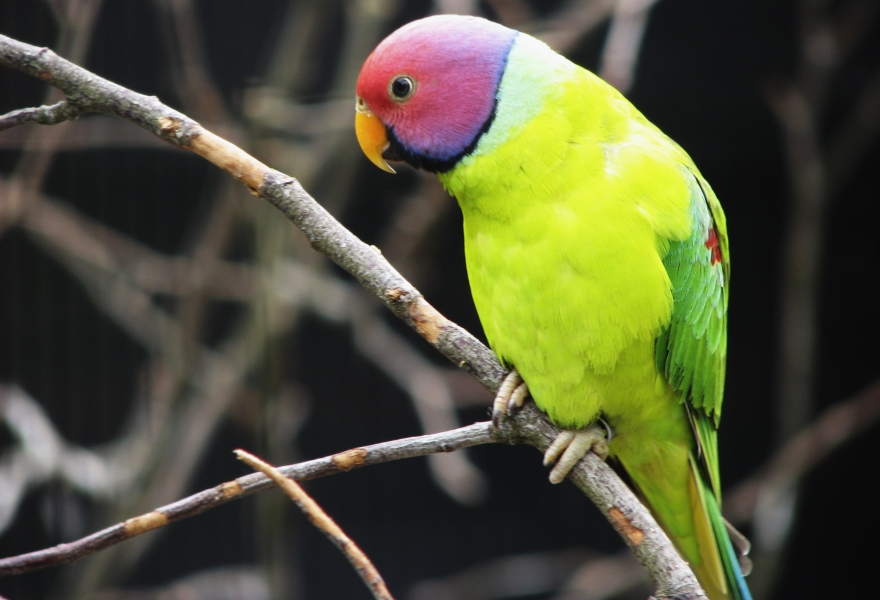Blossom-Headed Parakeet

Description
The blossom-headed parakeet (Psittacula roseata) is a parrot which is a resident breeder in northeast India eastwards into Southeast Asia. It undergoes local movements, driven mainly by the availability of the fruit and blossoms which make up its diet.
It has two subspecies, nominate and juneae Blossom-headed parakeet is a bird of forest and open woodland. It nests in holes in trees, laying 4-5 white eggs.
This is a green parrot, 30 cm long with a tail up to 18 cm. The male's head is pink becoming pale blue on the back of the crown, nape and cheeks. There is a narrow black neck collar and a black chin stripe.
There is a red shoulder patch and the rump and tail are bluish-green, the latter tipped yellow. The upper mandible is yellow, and the lower mandible is dark.
The female has a pale grey head and lacks the black neck collar and chin stripe patch. The lower mandible is pale. Immature birds have a green head and a grey chin. Both mandibles are yellowish and there is no red shoulder patch.
The different head colour and the yellow tip to the tail distinguish this species from the similar plum-headed parakeet (Psittacula cyanocephala).
Blossom-headed parakeet is a gregarious and noisy species with range of raucous calls.
Scientific Name
Psittacula roseata
Country Of Origin
Northeast India
Size
12 inches (including tail)
Life Expectancy
20 to 30 years
Noise Level
Loud
Talk / Trick Ability
Good
Characteristics
Blossom-headed parakeets are rare and therefore are not commonly kept as pets. The male blossom-headed parakeet has beautiful coloring, including a pink head that becomes pale blue on the back of the crown, nape and cheeks, as well as a narrow black neck collar and a black chin stripe. As a general rule, Psittacula species such as the blossom-headed parakeet are friendly and noisy. They have very good talking and whistling abilities.
Behavior / Health Concerns
Psittacula parakeets can form bonds with one person (usually their owners) and, because of this, could refuse to interact with other people — they may even bite people other than their owner. They can also exhibit jealousy of other family members or pets. For this reason, positive reinforcement training is a good idea for Psittacula parakeets. Owners should be cautious in multiple-pet bird homes.
Expert Advice
“Quiet parakeet, seldom heard; initially very shy, later confiding.”
Zahir Rana, www.psittacula-world.com